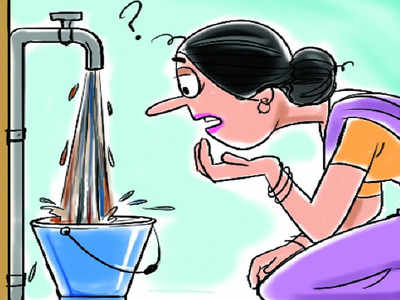The Hindu 11.06.2013
Three more water sources identified

Peppara Dam is the sole source of drinking water supply in the capital city now.
The days that the Peppara Dam has remained the sole
water source for the capital city, a situation that has led to many a
crisis when water-levels in the dam dipped, are likely to be over soon
with three other drinking water sources for the city being identified.
The
identification of new water sources is part of the State Water
Resources Department’s project to have at least two sources for every
district’s water supply scheme, and in Thiruvananthapuram, the sources
that have been identified are the Vamanapuram river, the Karamana river
and the Vellayani freshwater lake.
The idea is to
construct dams/reservoirs or check dams or similar systems, depending on
the topography, and link the same to the city’s distribution system,
ensure recharging and protection of these water sources, and prevent
misuse of the water apart from preventing pollution of the same.
Vamanapuram river
Still
in the initial planning stages, the project is likely to see the
government asking the Irrigation Department to consider changing the
Vamanapuram Irrigation Project, which has remained on paper even after
four decades, into a water supply scheme and to construct a dam there.
The Vamanapuram river, as of now, caters to only the Varkala and
Attingal water supply schemes. With the city’s horizons widening towards
Chenkottukonam, and Technocity and allied developments coming up in the
region, the geographical proximity of the Vamanapuram river to that
region is being seen as a plus point.
Karamana river
As
for the Karamana river, the plan is to draw water from upstream
Karamana, from near Bonacaud, where pollution is minimal. Though the
idea is yet to be discussed, the possibility of removing the sand
deposits upstream of Peppara, after considering environmental concerns,
to enable more flow of water downstream, is also likely to be examined,
official sources told
The Hindu
.
Vellayani lake
The case of the Vellayani lake could depend on the proposed restoration and conservation projects for the lake.
The
Assembly Committee on Environment, chaired by K.P. Nooruddin, had
suggested immediate restoration measures for the lake way back in 1992,
pointing out that the lake had then itself ceased to be a freshwater
lake literally. However, 20 years later, little has happened apart from
several projects being announced. With the lake being identified as one
of the potential water sources for the city — it currently provides
water to a few panchayats in the Vizhinjam-Kovalam region and a few
wards of the Thiruvananthapuram Corporation — the projects were likely
to receive some momentum, the officials said.

